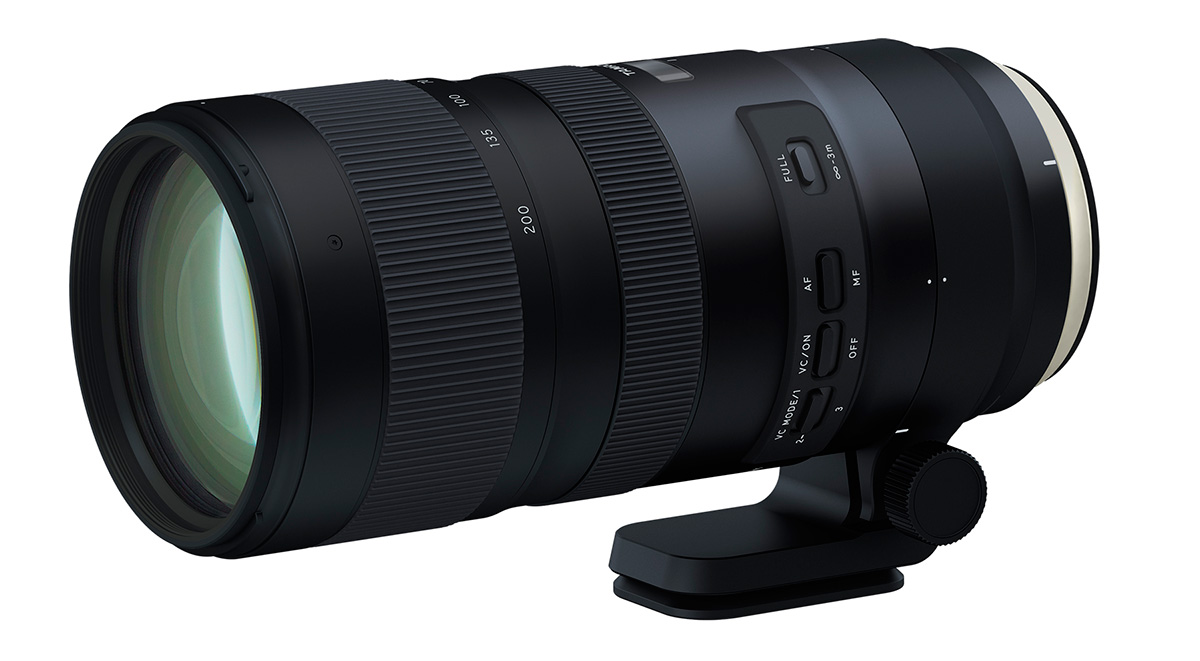Camera lens review: Tamron SP 70-200mm f/2.8 DI VC USD G2
A camera lens review of the Tamron SP 70-200mm f/2.8 DI VC USD G2
• November 2017 issue
The new golden age of photography continues with an updated lens from Tamron. Packed with high-end glass, a fast and quiet autofocus system, second-generation vibration stabilization with three modes, and a solid mechanical feel, the SP 70-200mm f/2.8 lens Di USD VC G2 boasts one additional feature that’s immensely attractive: a highly competitive price.

In this close-up you can see the extraordinary depth captured by the Tamron SP 70-200mm f/2.8 lens.
HOW IT DELIVERS
In testing, I was impressed by the lens’ ability to resolve fine detail as well as the visual feel of the resulting images. Although it doesn’t have true macro capability, the lens conveyed almost 3-D depth in a close-up of an exotic water lily shot with a Canon EOS 5DS. The pistils and stamen are depicted with a gorgeous roundness as sharpness rolls off from the point of focus. I also found the lens to be a fine portrait and general purpose telephoto zoom.

The lens works well as a portrait and general purpose telephoto zoom.
The autofocus is fast and accurate, and the anti-shake modes work well. The lens is well sealed against moisture and grime and has a non-rotating 77mm filter mount.
The foot of the rotating removable tripod mount is an Arca-Swiss type quick-release plate and is tapped for a standard 1/4"-20 thread tripod mount, which will please any photographer using a monopod or tripod.
Being a large-aperture telephoto zoom, this is not a light lens, but it balances well on medium to large cameras. Overall, it ranks right up there with equivalent lenses from Canon, Nikon, and Sony.
With a minimum focus distance just shy of 38-inches and a maximum magnification ratio of 1:1.6, this isn’t a macro lens. (Tamron makes another 70-200mm f/2.8 that does that job.) Various performance aspects of the lens can be custom tuned using the Tamron Tap-in Console, which is sold separately. The console connects to the lens via the electronic contacts in the lens mount.
The optical formula is complex: 23 elements in 17 groups. The first five pieces of glass are large diameter, which helps with light gathering and smooth bokeh. Two of those elements are made of Tamron’s low dispersion (LD) glass, as are three more elements throughout the rest of the optical path. Another one of the first elements is made from extra low dispersion (XLD) glass. The coatings on certain internal elements tightly constrain fine-detail-destroying internal reflections and refractions. The front element has a moisture- and grime-repelling fluorine coating.
Optically, the lens performs extremely well from f/2.8 to f/11, with resolution progressively and smoothly declining below f/11. You can confidently shoot at f/16 or f/22 if you need to, but the sweet spot of optical performance is in the f/4 to f/9 range. Likewise, stopping down even slightly from the wide open aperture tightens up the rendering of very fine details.

Fine detail really comes through, and the falloff of focus translates into a gorgeous, creamy texture.
The curved edges of the nine aperture blades and large-diameter glass in the front groups of elements make for smooth blurring in out-of-focus areas even at midrange f/stops. Vignetting is slight, and the lens profile Adobe has generated for this lens does a good job of negating it. Even without the assistance of a software lens profile, the lens is well corrected for both geometric and chromatic aberrations throughout the focal length range. The lens does a fine job of producing a pleasing illusion of depth in portraits and close-ups of details in nature.
I tested this lens with two cameras: the 18.1-megapixel Canon EOS 1D X, optimized for fast action and low light, and the significantly higher resolution 50.6-megapixel Canon EOS 5DS. Shooting action at a high frame rate with the 1DX pushes a lens’ autofocus acquisition and tracking capabilities. The 5DS is superb at finding the limits of its ability to resolve fine details and reveals optical flaws masked by lower resolution cameras.

Using the Canon EOS 1DX, I could test the abilities of the lens' fast autofocus acquisition and tracking.
A BIG DEAL
As we’ve seen in other new releases, the Tamron engineers and manufacturing teams have been delivering exceptional quality in recent years.
I want to reiterate my praise for the incorporation of an Arca-Swiss quick-release plate into the tripod mount. Many photographers use tripods and monopods all the time, so this is a seemingly little detail that’s a big deal. Given how much money photographers spend on quick-release plates and clamps, it’s about time a lens maker paid attention to how their customers work and helped save them some money and hassle. It would be great to see other telephoto lens makers and camera manufacturers make similar initiatives. Why use the open-channel double dovetail Arca-Swiss design over fitted cavity and plate designs? In a word, versatility. With the exception of Manfrotto, virtually every tripod head manufacturer in the world has standardized on the Arca-Swiss design.
Ellis Vener is a contributing editor of Professional Photographer.


 View Gallery
View Gallery
